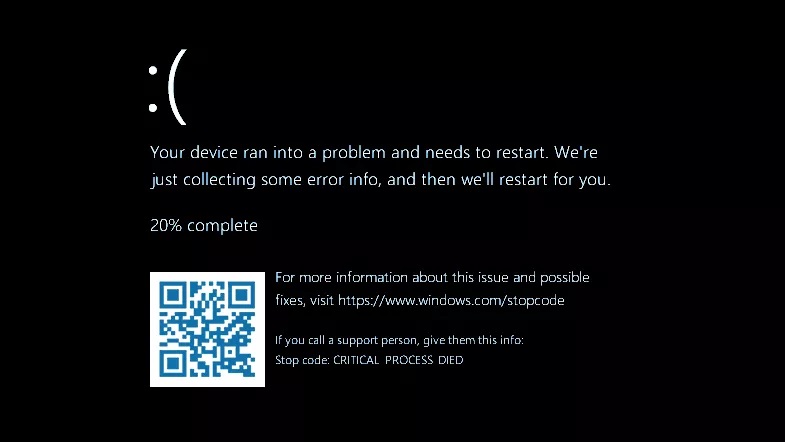RIP BSOD: Windows 11 could be getting black screen of death
The famous ‘blue screen of death’ may be getting a new look for Windows 11

Update: Microsoft is bringing the BSOD back to Windows 11.
It could be the end of an era: The Verge reported that Microsoft could be turning the famous blue screen of death (BSOD) black when Windows 11 launches.
While the acronym will remain the same in such a circumstance, the blue color for serious errors has been a part of Microsoft’s operating system since Windows 3.0 in 1990. So this would be quite a big change for the company.
- Windows 11 requirements: These are all the CPUs that are compatible
- Windows 11 vs Windows 10: Here's what's new
- PLUS: Fitbit could be working on a new smart ring
It would also be a slightly strange one, given nothing else on the screen is said to be different. There will still be the same emoticon sad face, first seen in 2012 with Windows 8, and the QR code giving you more information on the error which debuted in 2016 will also be present.
Only the color is reportedly set to change and no explanation has been given. It could simply be to try and make the screen match the startup and shutdown colors, although it would be odd to make an alert designed to draw attention blend in more. Another possibility is that it’s simply something to make Windows 11 stand apart from Windows 10, given the two have so much shared DNA, and there are already plenty of cosmetic changes afoot.
If you have the current Windows 11 preview build installed, you’ll likely still be seeing blue screens, as our sister site Tom’s Hardware notes. However, our colleagues were able to instigate the change early, should you want to get a taste of what may be ahead.
The change, first spotted by @XenoPanther on Twitter, can be enabled via a simple registry edit, tested by Tom’s Hardware.
Sign up to get the BEST of Tom's Guide direct to your inbox.
Get instant access to breaking news, the hottest reviews, great deals and helpful tips.
Via regedit, navigate to HKLM\SYSTEM\CurrentControlSet\Control\CrashControl and set the value of DisplayPreReleaseColor to 0. Restart, and the next time your PC encounters a critical error, you’ll be seeing black rather than blue.
If you don’t have the new operating system yet, but can’t wait to give it a go, you can try it right now, assuming you have the required hardware. If you need help, here’s how to install Windows 11.
Freelance contributor Alan has been writing about tech for over a decade, covering phones, drones and everything in between. Previously Deputy Editor of tech site Alphr, his words are found all over the web and in the occasional magazine too. When not weighing up the pros and cons of the latest smartwatch, you'll probably find him tackling his ever-growing games backlog. Or, more likely, playing Spelunky for the millionth time.

